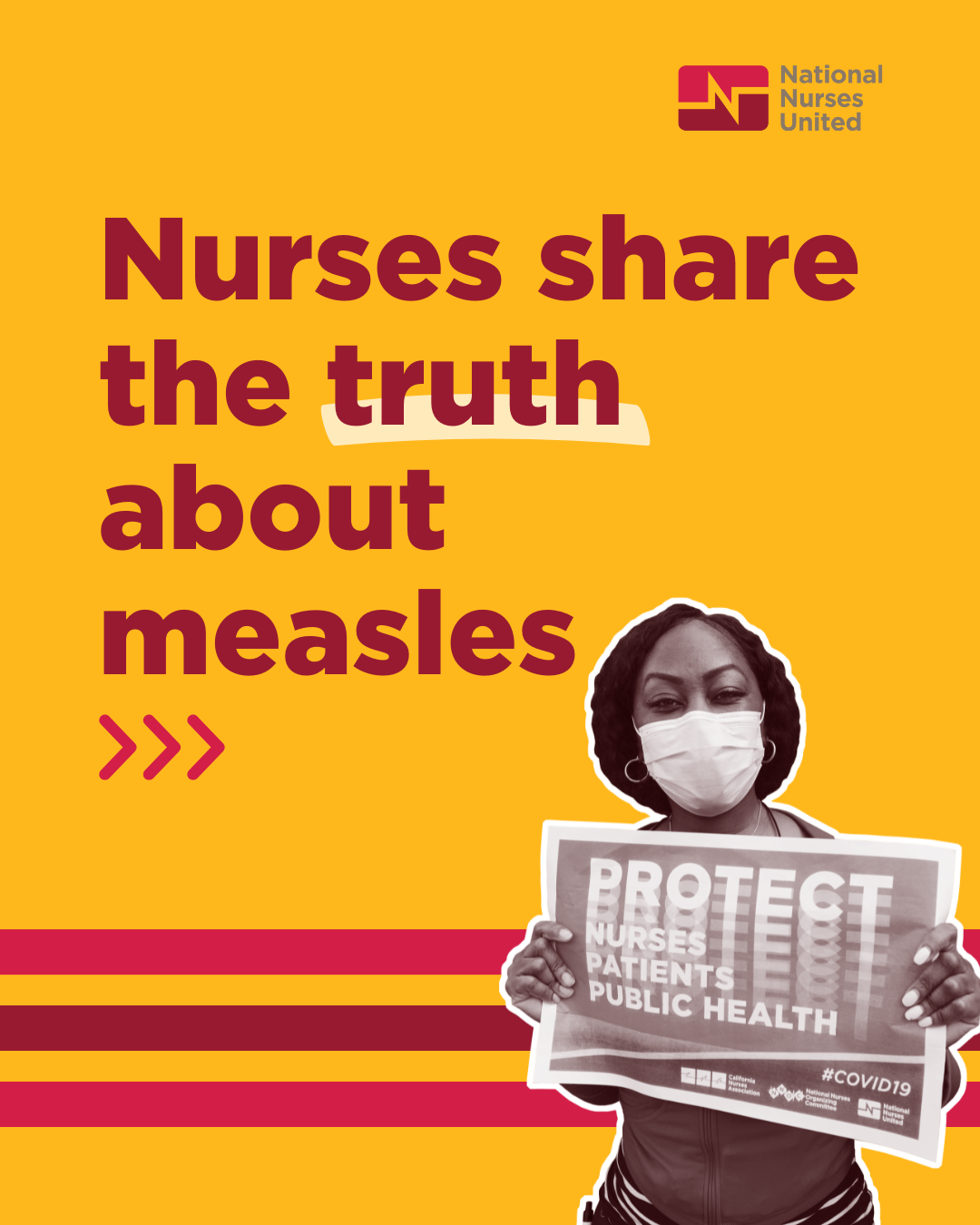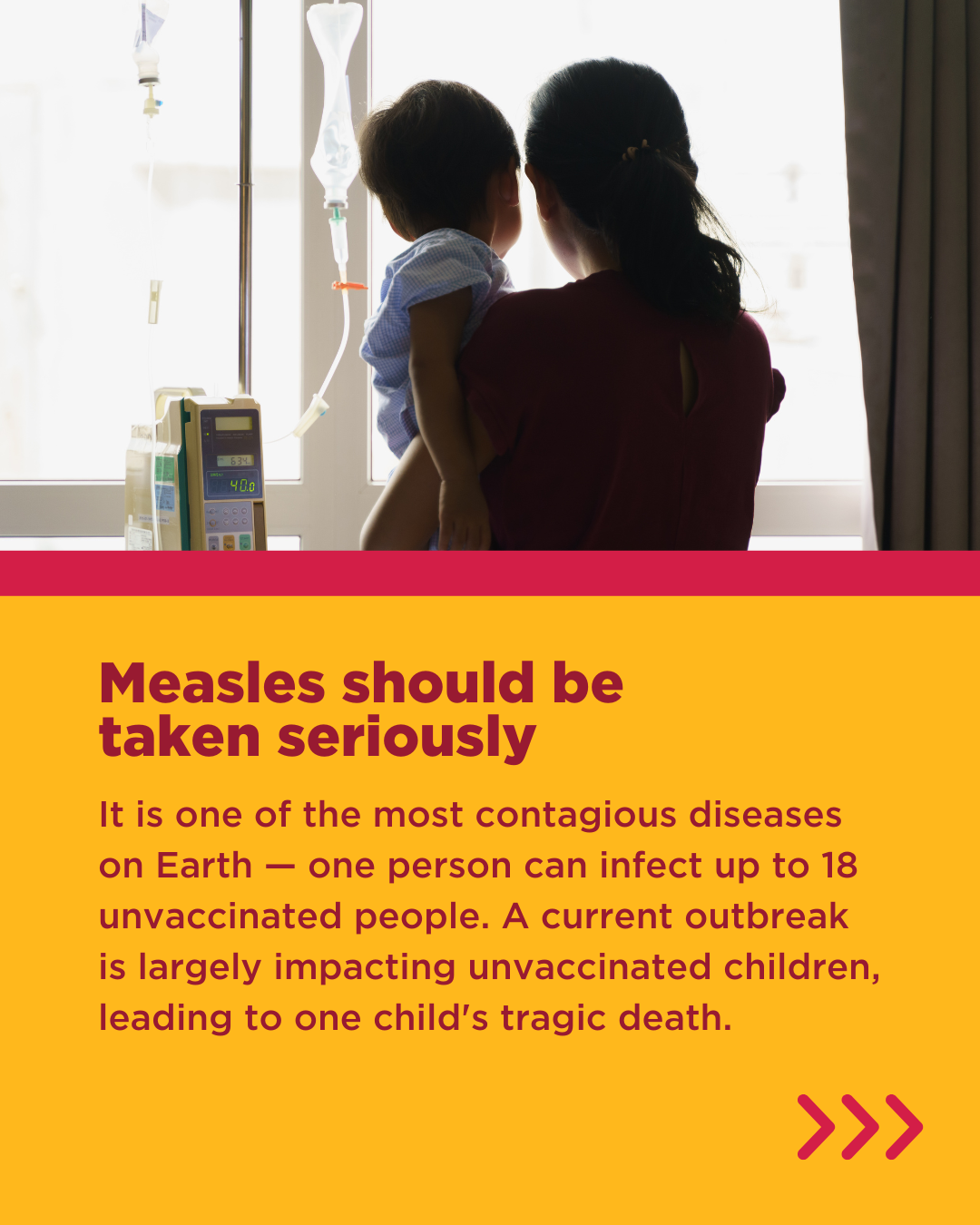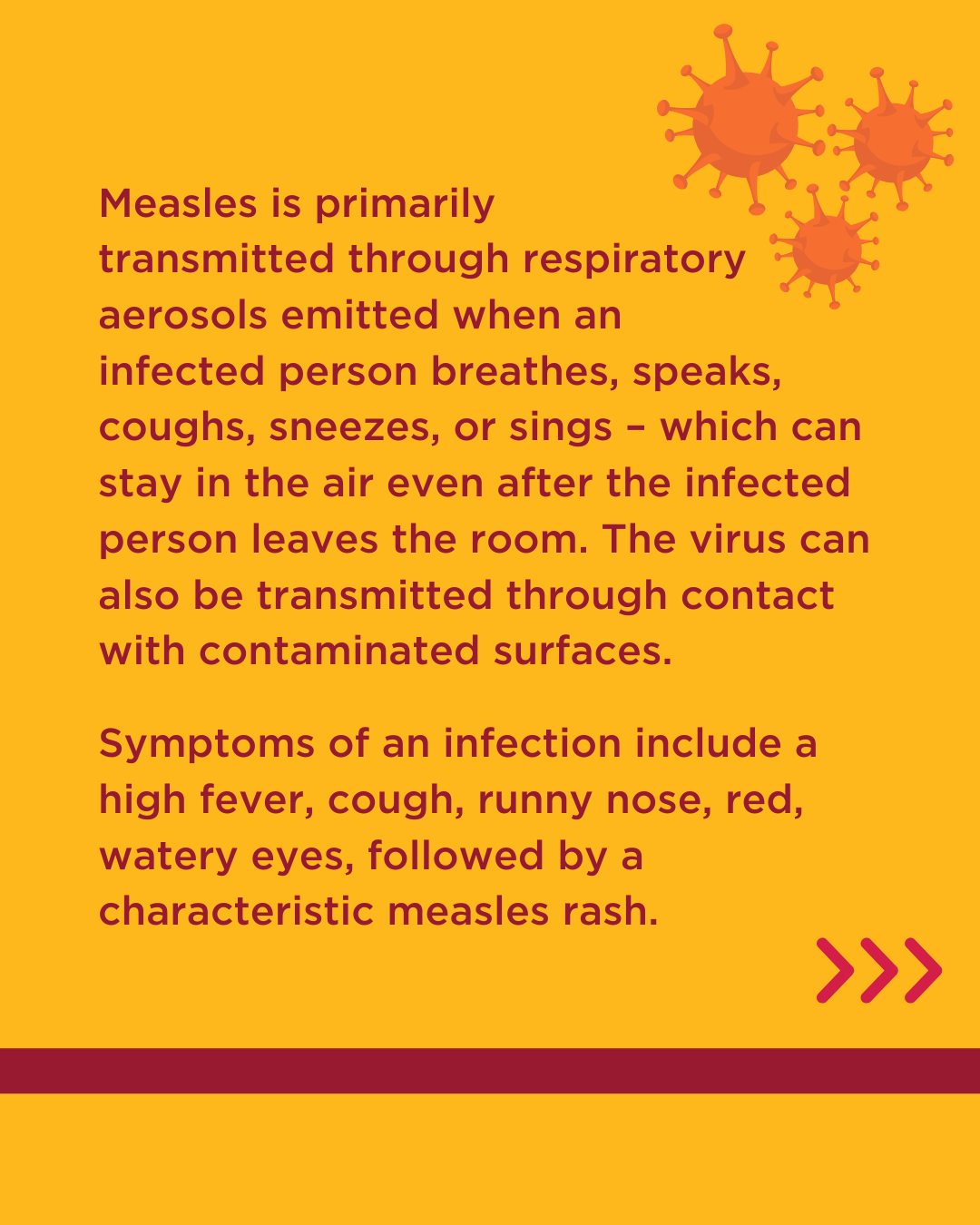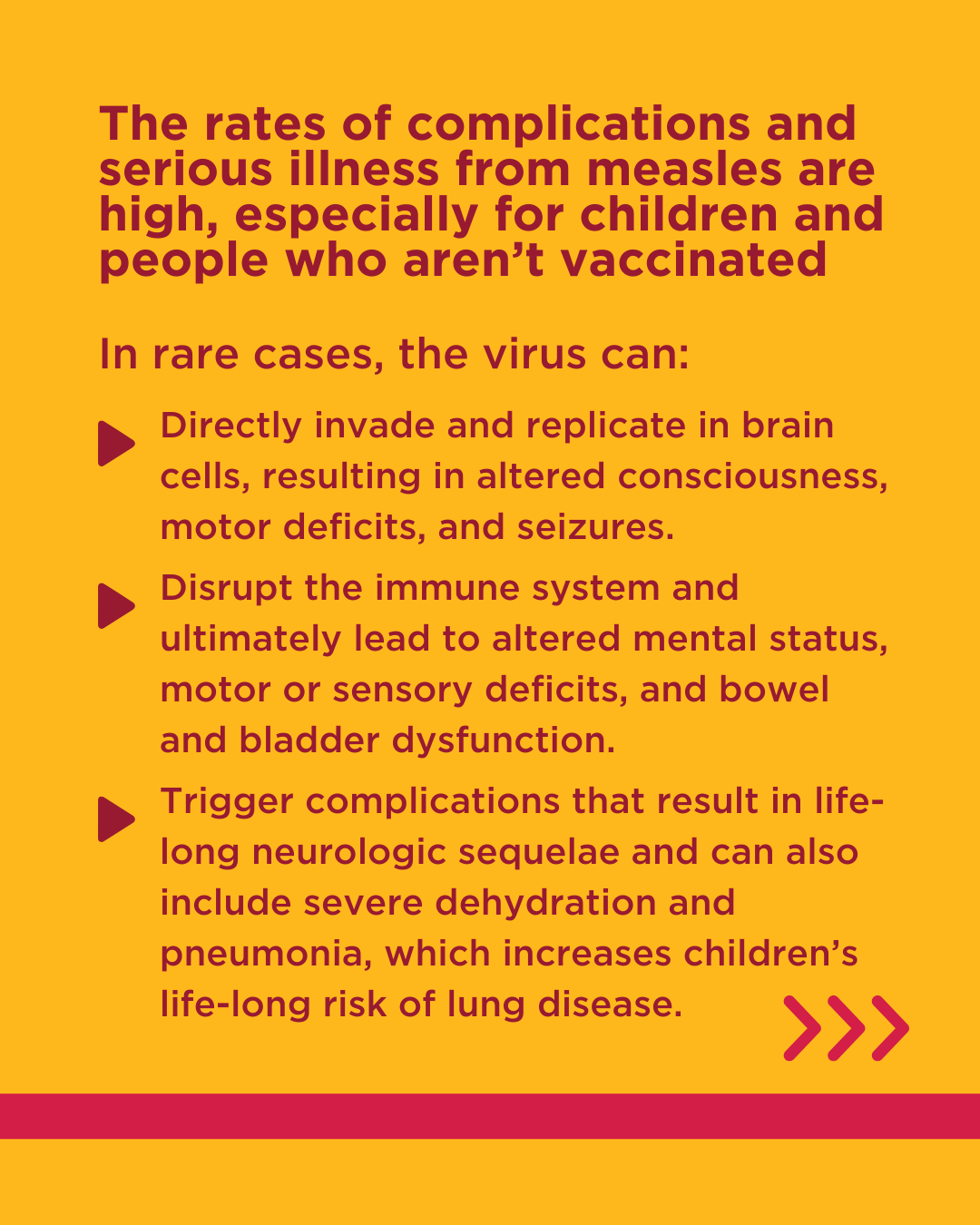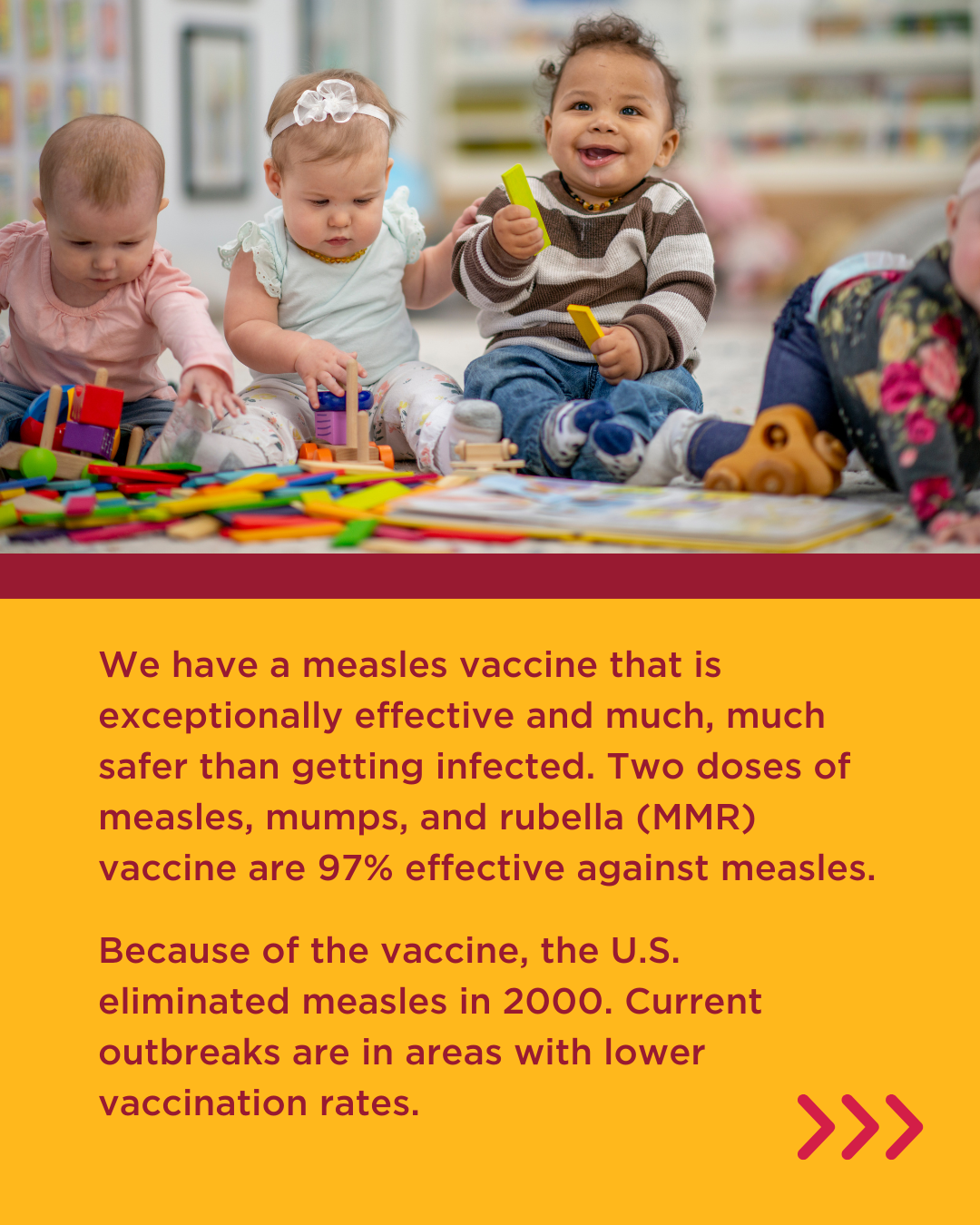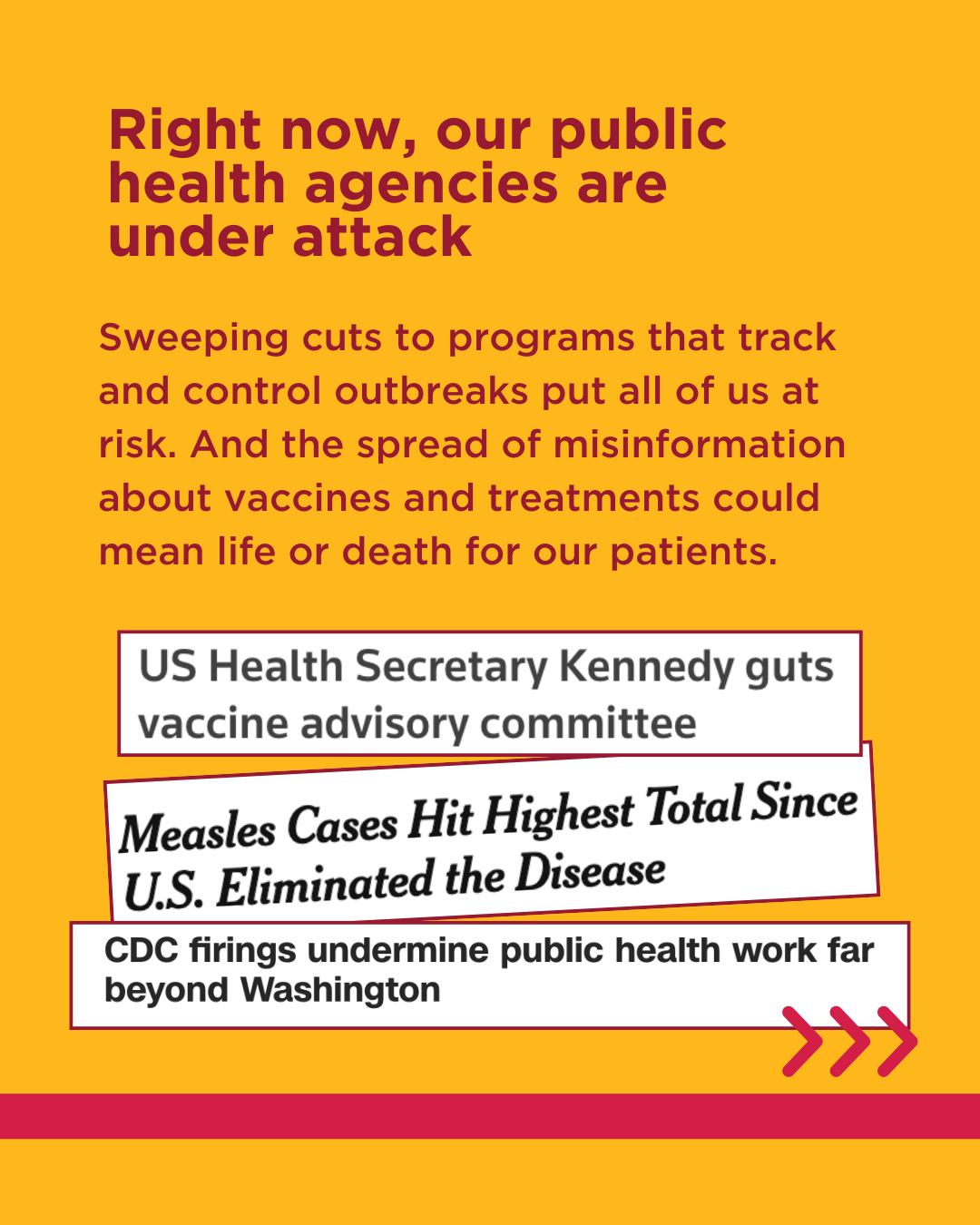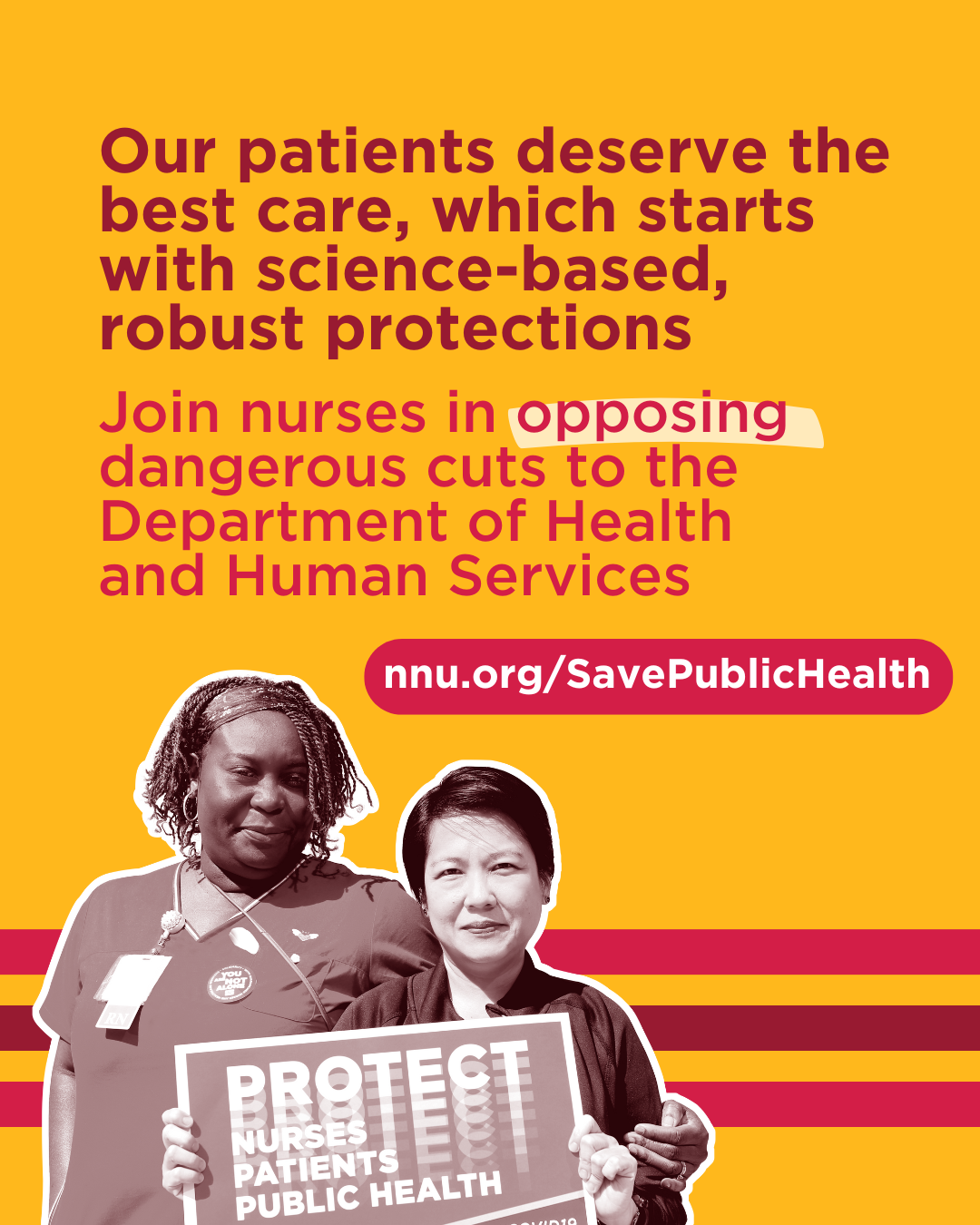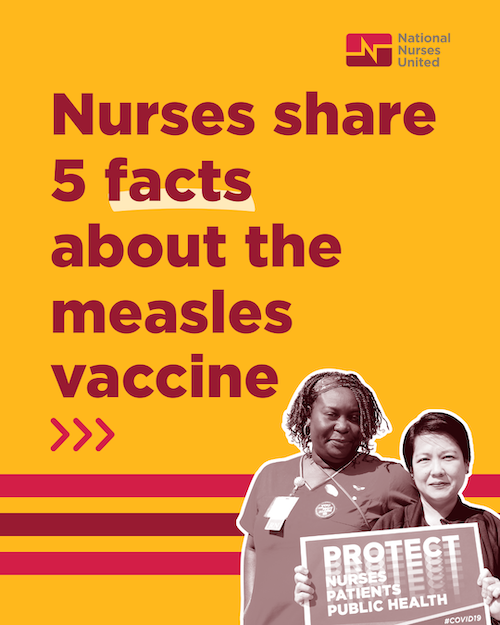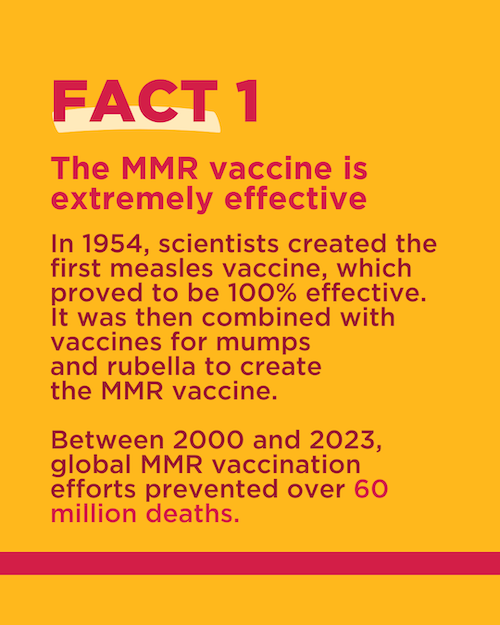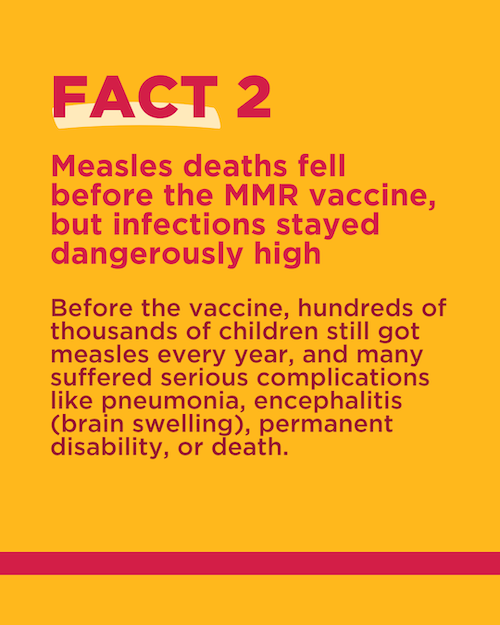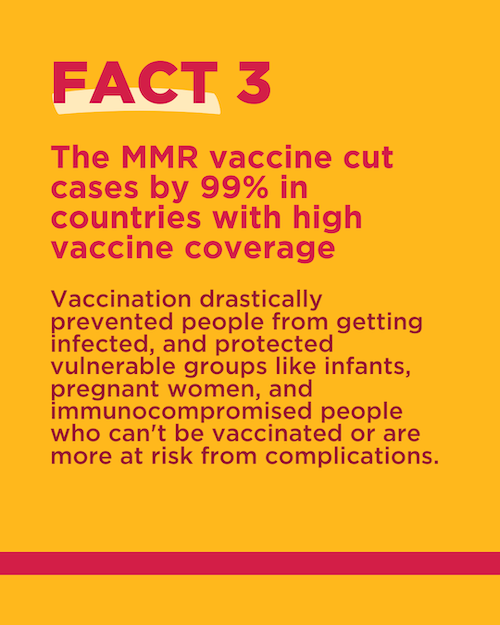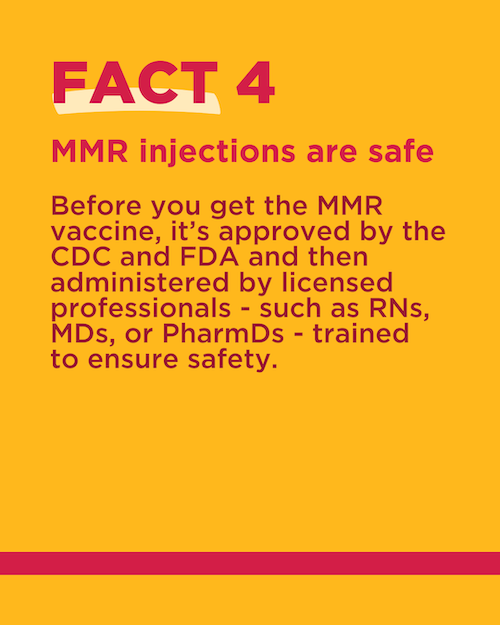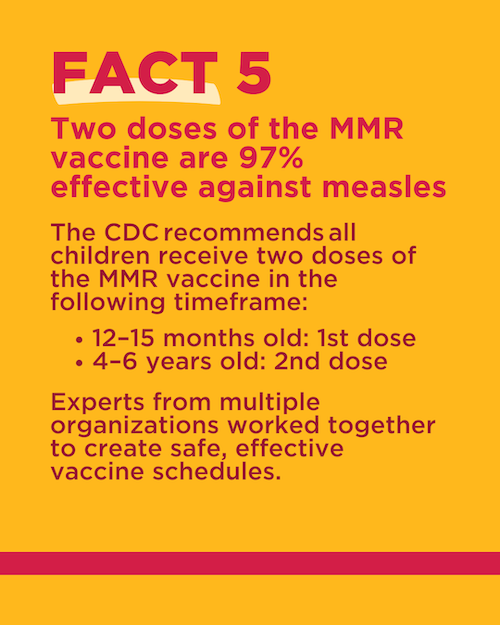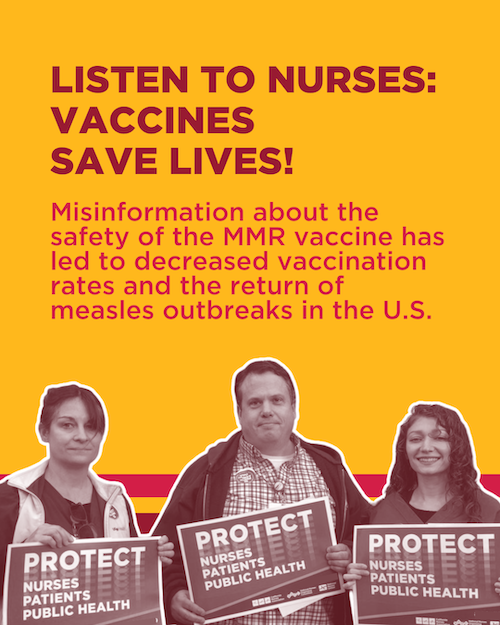Measles: What nurses need to know
- What is measles?
- What are the symptoms and complications of measles?
- How is measles transmitted?
- How effective is the measles vaccine?
- Can health care workers be infected with measles, even if they are vaccinated?
- What protections do nurses and other health care workers need to care for a patient with suspected or confirmed measles?
What is measles?
Measles virus (MeV), also known as Rubeola, is a highly contagious aerosol-transmitted infectious disease. Globally, measles cases rose 30-fold in 2023 compared to 2022 and remain a significant cause of death among children worldwide. Despite its elimination in the United States in 2000, there remains a serious risk of outbreaks.
Measles cases are often the result of virus importation by unvaccinated or under-vaccinated U.S. residents who travel abroad and transmit locally in areas with low child immunization rates. Less than 93 percent of U.S. kindergarteners are vaccinated for measles as of 2024, below the 95 percent threshold to maintain community protection.
As of March 2025, the U.S. is experiencing several measles outbreaks across the country and cases have already surpassed 2024 totals. Up-to-date information about the evolving measles outbreaks can be found here.
Download the measles fact sheet here »
What are the symptoms and complications of measles?
Measles is characterized by a stepwise increase in fever (≥101°F) accompanied by cough, coryza, conjunctivitis, and/or Koplik spots (on mucous membranes), followed by a characteristic maculopapular rash. Measles rash usually appears two to four days after symptom onset and spreads from the face and upper neck to the lower extremities. However, a majority of patients are infected with the virus without developing a rash or other measles-specific symptoms. Approximately 67 percent of an infected population will be asymptomatic.
Severe cases of measles can result in hospitalization or death. Measles can lead to serious complications and long-term health effects in all age groups, particularly among children, pregnant women, and immunocompromised persons.
A measles infection can induce immune amnesia or long-term damage to immune memory, increasing susceptibility to other infections. As many as one out of every 20 children with measles will develop pneumonia, which is the most common cause of death from measles in young children.
Neurological complications are also a concern. Measles can disrupt the immune system and ultimately lead to altered mental status, motor or sensory deficits, and bowel and bladder dysfunction in one out of every 1,000 children (acute post-measles encephalitis). In three out of every 1,000 infections, measles causes encephalitis—where the virus directly invades and replicates in brain cells—and can result in altered consciousness, motor deficits, intellectual disabilities, loss of hearing, and seizures. Subacute sclerosing panencephalitis (SSPE), a progressive neurological disorder, may also develop 7 to 10 years following acute measles infection.
Other complications include:
- Diarrhea
- Otitis media
- Blindness
- Hepatitis
- Appendicitis
- Viral meningitis
- Premature birth
How is measles transmitted?
Measles virus is one of the world’s most contagious diseases. Measles is transmitted primarily through respiratory aerosols, which are infectious aerosols emitted when an infected person breathes, speaks, coughs, sneezes, or sings. The virus can also be transmitted through contact with contaminated surfaces.
Measles can remain infectious for several hours in the air and on surfaces after an infected person leaves an area. Infectious measles virus has been detected in air and surface samples near measles-infected patients, underlining the risk to health care workers and patients. One study found measles RNA in the air up to three meters (about 10 feet) from the patient, on surfaces (e.g., patient’s bed rail, bedside table), and on N95 respirators worn by health care workers.
The incubation period for measles from exposure to rash onset ranges from seven to 21 days.
The infectious period for measles ranges from eight days to several weeks. While it is traditionally understood that measles is infectious for a total of eight days, from four days before until four days after rash onset, a recent study found that infected patients can begin transmitting the virus up to 11 days prior to symptom onset. Additionally, some individuals may shed the virus for several weeks to months after acute illness.
Asymptomatic individuals can also transmit the virus. Research shows that approximately 20 percent of measles transmission occurs from a reservoir of individuals without symptoms, with those individuals being contagious for four days.
Transmission and infection with measles is more likely to occur in individuals with the following epidemiological risk factors, regardless of measles vaccination history:
- Known contact with a measles case or an ill person with fever and a rash
- Contact with an international visitor who arrived in the U.S. within the past 21 days
- Travel outside the U.S., Canada, or Mexico
- Domestic travel through an international airport
- Visited a U.S. venue popular with international visitors such as a large theme park
- Lives in or visited a U.S. community where there are measles cases
- Works in a medical facility
How effective is the measles vaccine?
The measles, mumps, and rubella (MMR) vaccine is safe and highly effective. Two doses of the MMR vaccine are 97 percent effective against measles—meaning the chances of becoming infected are 97 percent lower with the vaccine than without. In an unvaccinated population, 90 percent of individuals exposed to the virus will become infected.
The CDC recommends all children receive two doses of the MMR vaccine in the following timeframe:
- 12–15 months old: 1st dose
- 4–6 years old: 2nd dose
The CDC also includes recommendations for other situations, especially where workplace exposures and outbreaks may be occurring, including:
- Unvaccinated adults and children older than six years are strongly encouraged to get the MMR vaccine in order to be protected.
- Some partially vaccinated adults born after 1957 and before 1989 only received one dose of the vaccine and may need a second dose, especially if working in occupations where they may be exposed to measles, such as health care workers.
- Infants six months or older are strongly encouraged to be fully vaccinated in areas where outbreaks are occurring or if they are traveling internationally.
Can health care workers be infected with measles, even if they are vaccinated?
Nurses and other health care workers are at high risk of occupational exposure to measles during local outbreaks. Both occupational and nosocomial transmission of measles are well documented in health care settings resulting from delayed recognition and late implementation of infection control measures.
- For example, an eight-hour delay in airborne isolation of a patient diagnosed with viral exanthem resulted in 450 exposures during the 2014 measles outbreak in a health care facility in California. Measles vaccine-acquired immunity provided health care workers with false reassurance to continue working without respiratory protection while occupationally exposed even when prodromal symptoms appeared. Five health care workers were occupationally infected with measles despite history of vaccination and immunity, resulting in 1,014 exposures.
- One investigation of a measles outbreak in a hospital found that eight health care workers became occupationally infected with measles. Of these eight infected health care workers, six had been vaccinated twice and two had confirmed titers prior to infection. In this investigation, the effectiveness of the two-dose measles vaccine was 52 percent.
As suggested in the investigation above, waning immunity of the MMR vaccine has been documented. A systematic review and meta-analysis found that MMR vaccine-acquired immunity declines each subsequent year. It is important that health care workers, who are at risk of exposure, are protected in a multifaceted manner that does not rely on vaccination alone.
What protections do nurses and other health care workers need to care for a patient with suspected or confirmed measles?
To protect health care workers from occupational exposures to measles, health care employers should implement a multilayered infection prevention plan that combines prevention measures such as isolation, ventilation, and personal protective equipment (PPE) with vaccination. Relying on vaccination alone is insufficient.
In California, health care employers are required to comply with Cal/OSHA’s enforceable Aerosol Transmissible Diseases (ATD) Standard to protect nurses and other health care workers from measles and other aerosol-transmitted infectious diseases. NNU is leading the campaign for a national enforceable OSHA infectious diseases standard so that nurses in every state are afforded the same enforceable workplace protections as nurses in California.
Important prevention measures, which are required in California health care facilities and should be implemented in all health care facilities to protect health care workers and patients, include:
- Patient and visitor screening – Screen patients and visitors before or immediately upon arrival at the facility to ensure prompt identification and diagnosis. Delays in identification of patients with possible measles infections can lead to a high number of exposures.
- Isolation and source control – Patients with suspected or confirmed measles should be isolated promptly in an airborne infection isolation room (AIIR) and asked to wear a surgical mask or N95 respirator (noting that use of N95 respirators can provide more effective).
- Ventilation – In addition to promptly isolating measles patients in AIIRs, adequate ventilation is essential for reducing the risk of measles transmission in lobbies, waiting rooms, and other areas of the facility where a measles case could be present before being identified and isolated. Patients infected with measles can spread the virus prior to development of symptoms (e.g., rash). Aerosol particle concentrations are likely to be highest nearest the source but will, over time, increase throughout a shared space if ventilation is not adequate, putting anyone in that space at risk of inhaling an infectious dose, even after the source has left the space. Please see NNU’s Nurses’ Guide to Improving Indoor Air Quality in Health Care guidance for more information about ventilation in health care settings.
- Personal protective equipment – A respirator at least as protective as a fit-tested, NIOSH-approved N95 respirator must be worn by any health care worker who enters an AIIR or other area where a possible or confirmed measles patients has been isolated, regardless of the staff’s immunity status. Powered air-purifying respirators (PAPRs) provide a higher level and more reliable protection than N95 filtering facepiece respirators.
- Training and education – Training and education should be provided to all staff who might encounter a possible measles patient, including in the emergency departments, clinics, triage, admitting and registration, and other areas. Training should include information on current measles outbreaks, how to recognize possible measles cases, and the employer’s exposure control plan to prevent measles exposure.
- Measles vaccination – Health care workers without evidence of immunity should receive two doses of MMR vaccine, separated by at least 28 days.
- Exposure notification and contact tracing – Employers should conduct contact tracing and immediately notify staff who were potentially exposed. Exposure should include both direct contact while providing care and sharing air space (e.g., being in the same waiting room, triage station, etc.). Employers should also provide access to post-exposure prophylaxis, vaccination, or other appropriate follow up as determined by a licensed health care provider at no cost to employees.
- Paid precautionary medical removal – Employers should provide paid precautionary medical removal for any nurse or other health care worker who is removed from the workplace due to occupational exposure or infection with measles.
